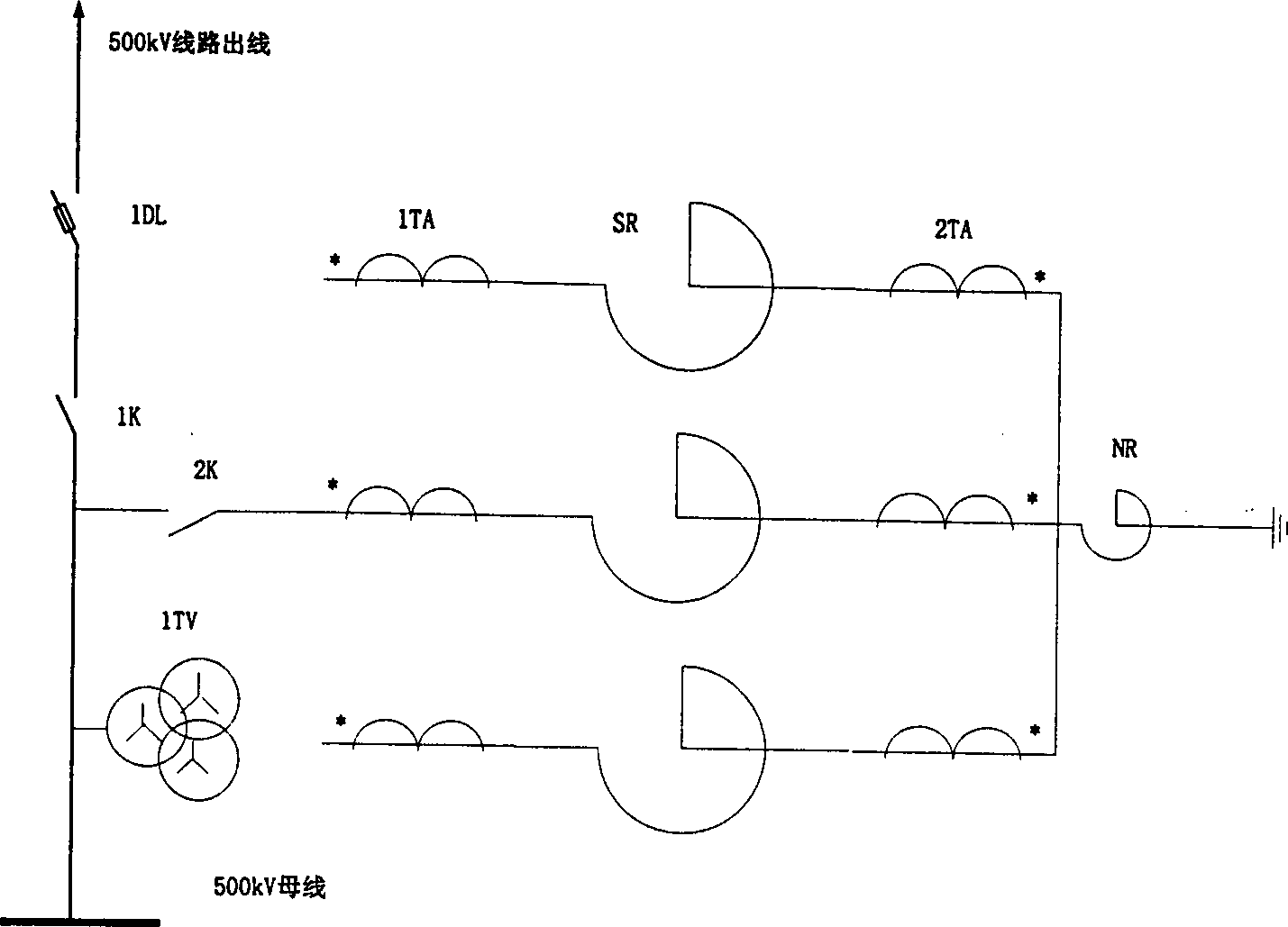Turn-to-turn short protection zero-sequence impedance discriminating method for parallel reactor
A discrimination method, zero-sequence impedance technology, applied in the field of power system, can solve the problems of high proportion of inter-turn short-circuit faults, reliable operation, fault monitoring limitation, reliability of protection criteria, real-time performance and low sensitivity, and achieve stable operation Reliable, easy-to-set results
- Summary
- Abstract
- Description
- Claims
- Application Information
AI Technical Summary
Problems solved by technology
Method used
Image
Examples
Embodiment Construction
[0043] The present invention will be further described below in conjunction with drawings and embodiments.
[0044] Example, Figure 6 shown.
[0045] The method for judging the zero-sequence impedance of the inter-turn short-circuit protection of the shunt reactor of the present invention is specifically implemented as follows: with an advanced and reliable hardware platform, (the schematic block diagram is shown in Figure 6 ) Use current transformers and voltage transformers to collect shunt reactors, high-side currents, low-side currents and high-side voltages, and obtain real-time currents, voltages and angles through analog / digital conversion and data processing.
[0046] Use the collected real-time current of each phase to make a weekly / weekly comparison, and the current change ΔI of the current week / week comparison i Greater than (0.1~0.3) the secondary rated current I of the reactor n , that is, it is considered that there is a disturbance in the power system, whic...
PUM
 Login to View More
Login to View More Abstract
Description
Claims
Application Information
 Login to View More
Login to View More - R&D
- Intellectual Property
- Life Sciences
- Materials
- Tech Scout
- Unparalleled Data Quality
- Higher Quality Content
- 60% Fewer Hallucinations
Browse by: Latest US Patents, China's latest patents, Technical Efficacy Thesaurus, Application Domain, Technology Topic, Popular Technical Reports.
© 2025 PatSnap. All rights reserved.Legal|Privacy policy|Modern Slavery Act Transparency Statement|Sitemap|About US| Contact US: help@patsnap.com



